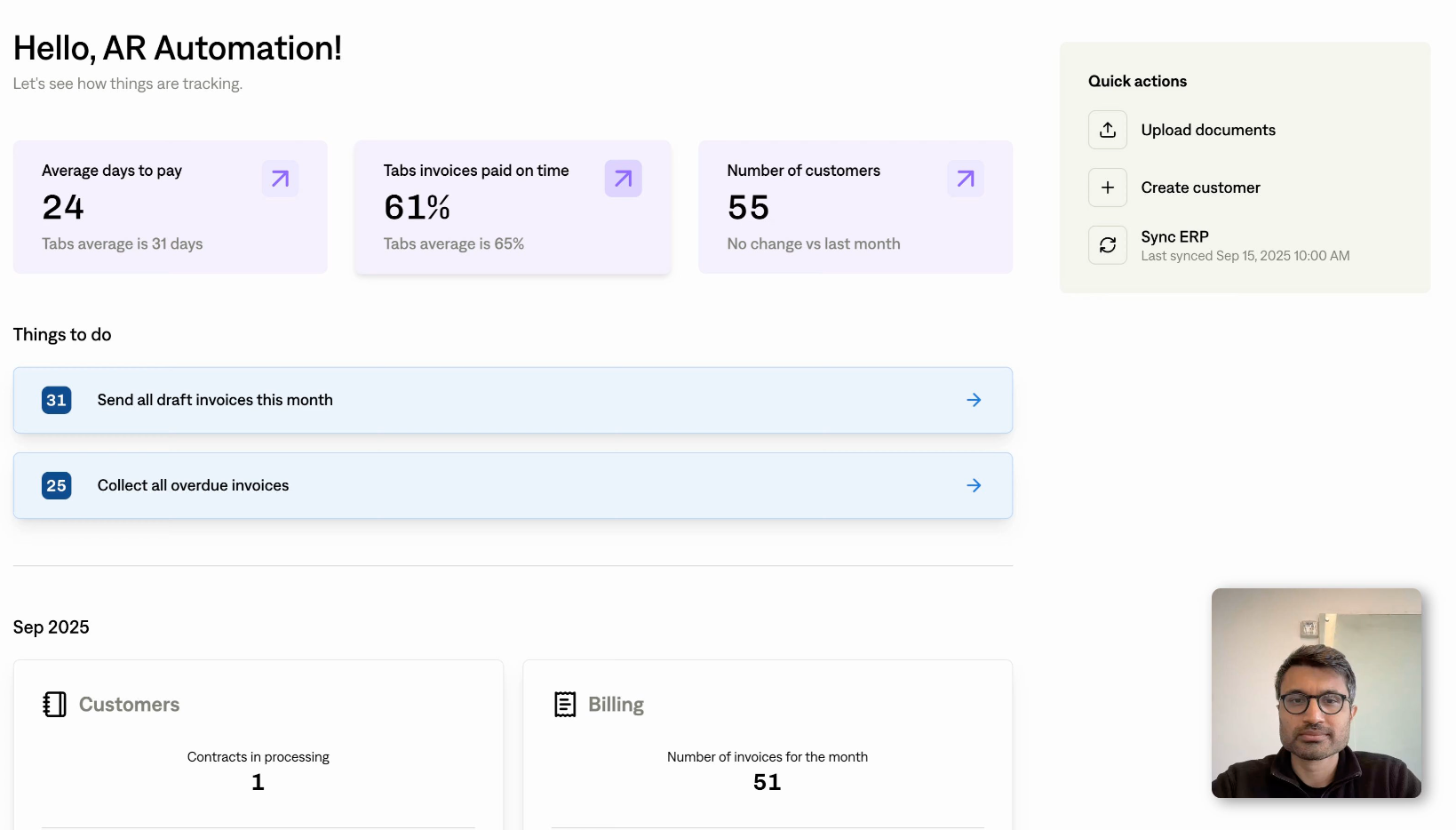Running a business means keeping a close eye on your finances, and accounts receivable is a key piece of that puzzle. It's the money owed to you, but is it a debit or a credit? Understanding this is crucial for accurate bookkeeping. This post clarifies the difference between accounts receivable debit and credit with clear explanations and real-world examples, helping you manage your finances effectively and get paid faster.
Managing accounts receivable effectively is critical to maintaining a healthy cash flow. We'll share strategies to help you manage your receivables efficiently, including the benefits of automation. By the end of this article, you'll clearly understand when accounts receivable is a debit or credit and how to manage it effectively to keep your business running smoothly.
Accounting Principles You Need to Know
Let's start with double-entry bookkeeping, the backbone of modern accounting. In this system, every financial transaction affects at least two accounts. This approach keeps your books balanced and accurate.
Debits and credits are the two sides of each transaction. When you debit one account, you must credit another. This method helps keep your accounting equation in check: Assets = Liabilities + Equity.
Debits increase asset and expense accounts while decreasing liability, equity, and revenue accounts. Conversely, credits increase liability, equity, and revenue accounts while decreasing asset and expense accounts. These rules guide how you categorize and record every transaction.
Accounts receivable represents money owed to you by your customers for goods or services provided on credit. It's an asset account because it's money you expect to receive in the future. Since debits increase asset accounts, accounts receivable is recorded as a debit.
For example, you don't get paid immediately when you sell goods or services on credit. Instead, the amount owed by the customer is recorded as accounts receivable. This entry shows you have a cash claim that you'll collect later. Understanding this concept helps clarify why accounts receivable, as an asset, is naturally a debit.
Key Takeaways
- Accounts receivable is usually a debit: This reflects the money customers owe you, which is an asset to your business. A debit increases asset accounts like AR.
- Credit balances in accounts receivable can happen: These can be due to overpayments, returns, or prepayments, but if they happen often, double-check your billing system for errors.
- Good AR management keeps your cash flow strong: Use clear payment terms, send invoices promptly, automate reminders, and check customer credit regularly to keep your finances healthy.
Double-Entry Bookkeeping and the Accounting Equation
Double-entry bookkeeping is a fundamental accounting method where every transaction affects at least two accounts. This system, explained well by Versapay, ensures the accounting equation (Assets = Liabilities + Equity) always remains balanced. For every debit entry, there’s a corresponding credit entry, maintaining this balance. Think of it like a seesaw—for it to stay level, both sides need equal weight. This balance is crucial for accurate financial reporting and provides a more complete picture of your company's financial position.
Accounts Payable vs. Accounts Receivable
Understanding the difference between accounts payable (what you owe) and accounts receivable (what others owe you) is crucial. Accounts payable represents your company's obligations to suppliers and vendors—the bills you need to pay. Accounts receivable represents the money owed to your company by customers for goods or services sold on credit—the payments you expect to receive. Keeping these two concepts distinct, both in your mind and your accounting software, provides a clearer view of your company’s overall financial health. For SaaS businesses with complex recurring billing, a platform like Tabs can automate much of this process, ensuring accuracy and efficiency.
Is Accounts Receivable a Debit or a Credit?
Accounts receivable is typically recorded as a debit. Accounts receivable is an asset account, and assets increase with debits. When you sell goods or services on credit, you expect to receive payment in the future. This expected payment is considered an asset, as it will eventually convert to cash, strengthening your financial position.
Recording accounts receivable as a debit reflects this future cash inflow. It shows you have a claim to money that your customers owe. By debiting accounts receivable, you increase the balance of this asset account, which accurately represents the value of the credit sales you've made.
Understanding why accounts receivable is a debit helps you maintain accurate financial records. It aligns with the fundamental accounting principles that guide how you record and report your business transactions.
Journal Entry Example: Sales on Credit
When you sell goods or services on credit, you don't receive immediate payment. Instead, the amount owed by the customer is recorded as accounts receivable. This entry captures the promise of future cash, an asset for your business.
For example, if you sell $1,000 worth of products on credit, your journal entry would look like this:
Debit: Accounts Receivable $1,000
Credit: Sales Revenue $1,000
This entry increases your accounts receivable balance, indicating an asset that will be converted to cash when the customer pays. At the same time, it recognizes the revenue earned from the sale. Recording this transaction accurately helps you keep track of money owed to you and reflects the actual value of your sales on your financial statements.
Journal Entry Example: Issuing Invoices
Issuing an invoice for goods delivered or services rendered is common for many businesses operating on credit terms. This process turns your sales into receivables, which you expect to collect in the future.
Let's say you issue an invoice for $500. The journal entry for this transaction would look like this:
Debit: Accounts Receivable $500
Credit: Revenue $500
When you debit accounts receivable, you increase the balance of this asset account, reflecting the money customers owe you. The revenue credit recognizes the income earned from the sale.
This entry accurately records the amount of money you expect to receive. Your financial statements reflect both the revenue earned and the receivable which will convert to cash upon payment. Properly recording these transactions helps you manage your cash flow and keep track of outstanding invoices, giving you a clear picture of your business's financial health.
When Accounts Receivable is a Credit
While accounts receivable is typically a debit, there are situations where it can have a credit balance. This occurs when the amount credited to the account exceeds the debits.
Overpayments
One common situation is overpayments by customers. If a customer pays more than the amount due, the excess payment creates a credit balance in accounts receivable. For example, if a customer owes $200 but accidentally pays $250, the extra $50 will be recorded as a credit in accounts receivable.
The journal entry for the overpayment would look like this:
Debit: Cash $250
Credit: Accounts Receivable $200
Credit: Accounts Receivable (Overpayment) $50
Returns and Allowances
Returns and allowances can also lead to a credit balance. When customers return goods or receive allowances for damaged goods, you reduce the accounts receivable balance. If the returns or allowances exceed the outstanding receivable, it creates a credit balance. For instance, if a customer returns $600 worth of goods but only owes $500, you'll have a $100 credit in accounts receivable.
The journal entry would be:
Debit: Sales Returns and Allowances $600
Credit: Accounts Receivable $500
Credit: Accounts Receivable (Return Excess) $100
Billing Errors
Billing errors might also result in credits. If you mistakenly invoice a customer for more than the agreed amount and the error is corrected, the adjustment could lead to a credit balance. For example, if you bill a customer $1,000 instead of $900 and correct the error after payment, the $100 difference becomes a credit.
The correcting entry would be:
Debit: Revenue $100
Credit: Accounts Receivable $100
By debiting revenue, you decrease it to the correct level and correct the overstatement. Your financial statements then accurately reflect the revenue earned and the amount the customer owes.
Credit Balances: A Sign of Bigger Issues?
While credit balances in accounts receivable can arise from legitimate reasons like customer overpayments or returns, consistently seeing them might point to deeper problems in your billing or collection processes. Recurring credit balances could indicate issues such as errors in invoicing, incorrect payment processing, or inadequate tracking of returns and refunds, according to Versapay. In fact, ChaserHQ recommends investigating *any* credit balance in AR right away. Addressing the root cause of these issues is essential for accurate financial reporting and efficient operations. For SaaS businesses dealing with the complexities of recurring billing, a robust platform like Tabs can help automate these processes and minimize errors, leading to cleaner books and a healthier bottom line. Automated invoice generation and payment processing through Tabs significantly reduces the risk of discrepancies and ensures accurate revenue recognition. With robust reporting tools, you can quickly identify and address any credit balance issues, keeping your AR clean and your financial operations running smoothly.
Prepayments
Prepayments by customers create a credit balance as well. When customers pay for goods or services in advance, the system records the payment as a credit in accounts receivable until completing the sale. For example, if a customer prepays $300 for a future service, it's recorded as a credit until you provide it.
The journal entry for the prepayment would look like this:
Debit: Cash $300
Credit: Accounts Receivable (Prepayment) $300
These situations highlight the importance of careful management of your accounts receivable. Accurately recording these credits ensures your financial statements reflect the true state of your receivables. Proper management of these scenarios helps maintain clear and accurate records, supporting better financial decision-making and overall business health.
Accounts Receivable on the Balance Sheet
Accounts receivable appears on your balance sheet under current assets. This placement reflects the expectation that you'll collect these receivables within a year, converting them into cash and improving your liquidity.
When you record accounts receivable, you recognize an asset that represents money owed to you by your customers. This is crucial for understanding your business's financial health, as it shows the potential cash inflows from credit sales. By listing accounts receivable under current assets, you highlight the part of your financial resources that will be available to you in the near term.
Accounts receivable also impacts the accounting equation: Assets = Liabilities + Equity. When you record a credit sale, you increase both your assets (accounts receivable) and your revenue (which ultimately affects equity). This dual effect keeps your books balanced. For example, if you have $5,000 in accounts receivable, this amount is part of your total assets, which must equal the sum of your liabilities and equity.
Properly managing accounts receivable on your balance sheet is essential. It gives you a clear picture of your current assets and helps you make informed financial decisions. You can track how much money you're owed and when you can expect to receive it, aiding in cash flow management. Accurate accounts receivable reporting also helps you maintain credibility with investors, lenders, and stakeholders by accurately representing your business's financial position.
AR as a Current Asset
Accounts receivable is classified as a current asset on the balance sheet. This means it's an asset expected to be converted into cash within one year. This short-term nature of AR directly impacts your company's liquidity, or its ability to meet immediate financial obligations. Accurately tracking and managing AR is essential for understanding your short-term liquidity and overall financial health. Think of it as a snapshot of the cash you anticipate receiving soon, giving you a clearer picture of your available resources.
When you make a sale on credit, you're essentially extending a short-term loan to your customer. This creates an account receivable, representing the amount they owe you. While this isn't cash in hand yet, it *is* an asset, reflecting the future cash flow you expect from that sale. This is why AR sits comfortably within the current assets section of your balance sheet, alongside other quickly convertible assets like cash and marketable securities.
For SaaS businesses, especially those working with recurring subscriptions, managing AR effectively is crucial. Predictable revenue streams are the lifeblood of SaaS, and a well-managed AR process ensures that those recurring payments are collected on time. Automating your billing and revenue recognition can significantly improve these processes. This, in turn, allows for better forecasting and more strategic decision-making.
Effective Accounts Receivable Management
Effective accounts receivable management is vital for maintaining healthy cash flow and your business's financial stability. When you manage your receivables well, you can improve your liquidity, making it easier to cover expenses, invest in growth, and handle unexpected financial challenges.
A well-designed accounts receivable process is crucial for maintaining a steady cash flow. Consider establishing key performance indicators (KPIs) to track the effectiveness of your AR management, such as Days Sales Outstanding (DSO) and Collection Effectiveness Index (CEI). Regularly monitoring these metrics will help you identify areas for improvement and optimize your collection efforts. By setting clear goals and benchmarks, you can proactively address potential issues and keep your receivables under control.
The Impact of Slow Payments
Slow or late payments can significantly impact your business’s cash flow. Healthy cash flow is crucial for covering operational expenses, investing in growth, and maintaining financial stability. A significant percentage of small businesses struggle with cash flow challenges. Efficient AR management helps mitigate this risk.
Understanding the AR Process
Effective AR management involves a clear understanding of the entire process, from extending credit to customers, applying cash receipts to specific invoices, and managing collections. Extending credit involves assessing a customer’s creditworthiness before offering payment terms. Accurately applying cash receipts to their corresponding invoices is essential for maintaining accurate records. Managing collections requires addressing overdue accounts and using appropriate strategies to recover outstanding debts.
Credit Terms and Incentives for Early Payment
Offering incentives for early payment, such as discounts, can encourage customers to pay faster, which in turn improves your cash flow. A common example is offering a 2/10 net 30 discount (a 2% discount if the customer pays within 10 days, otherwise the full payment is due in 30 days). This type of incentive can be a powerful motivator for faster payments.
Streamlining AR with Tabs
Managing AR efficiently can be complex. Tabs offers robust billing software designed to automate and streamline these processes, helping you improve cash flow and reduce manual effort. Our platform provides tools for automated billing and revenue recognition, and insightful reporting, empowering you to optimize your financial management.
Regular Credit Checks
Conducting regular credit checks on your customers is an essential strategy for managing accounts receivable effectively. By evaluating the creditworthiness of your customers, you can reduce the risk of bad debts. A thorough credit check involves reviewing a customer's credit history, financial statements, and payment behavior. This information helps you make informed decisions about extending credit, setting appropriate credit limits, and establishing payment terms that align with the customer's ability to pay.
Clear Terms of Sale
Clearly defined terms of sale are crucial for avoiding payment delays and disputes. Your terms should specify the payment due date, accepted payment methods, and any penalties for late payments. Communicating these terms at the beginning of the transaction sets clear expectations and encourages timely payments. Consider including these terms on invoices and in sales contracts:
- Payment Due Date: Specify when payment is due, such as Net 30, Net 45, or Net 60 days from the invoice date.
- Accepted Payment Methods: Outline acceptable payment methods, such as bank transfers, credit cards, or checks.
- Early Payment Discounts: Offer incentives for early payments, like a 2% discount if paid within 10 days (2/10 Net 30).
- Late Payment Penalties: Define penalties for late payments, such as interest charges or late fees, to encourage prompt payment.
- Delivery and Acceptance Terms: Detail delivery timelines and acceptance criteria to prevent disputes.
- Return and Refund Policies: Clearly state your return and refund policies to manage customer expectations.
- Credit Terms: Specify credit limits and requirements for maintaining creditworthiness.
- Dispute Resolution: Outline how disputes will be resolved, whether through mediation, arbitration, or legal proceedings.
Including these elements on invoices and sales contracts lets customers understand and agree to your terms, fostering trust and encouraging timely payments for healthier cash flow.
Efficient Invoicing Practices
Use accurate and detailed invoices outlining the goods or services provided, the amount owed, and the payment due date. Send invoices promptly after the sale or service delivery to steady your cash flow.
Consider using electronic invoicing to speed up the process and reduce the likelihood of errors. Additionally, implementing a systematic approach to follow-up on overdue invoices can significantly improve your collection rates. Tracking outstanding invoices and contacting customers regarding overdue payments can dramatically improve your collection rates. Establishing a structured follow-up process, including a schedule for reminders and escalations, helps you address overdue accounts promptly and professionally.
Systematized Payment Reminders
Automated payment reminders can help customers make timely payments. Set up reminders at regular intervals before and after the payment due date. Friendly reminders keep your invoices at the forefront of your customers' minds and can reduce the likelihood of late payments. You can use email, SMS, or even automated phone calls as reminders.
Maintaining consistent communication with your customers regarding outstanding invoices can improve your cash flow and reduce the time spent on collections.
Automating Your Accounts Receivable Process
Automation can transform your accounts receivable management by reducing manual tasks and increasing efficiency. Automated systems can generate and send invoices, track payment statuses, and send reminders without human intervention. This reduces the risk of errors so you complete critical tasks on time.
Automated accounts receivable solutions, like Tabs, offer advanced features such as AI-powered analytics and reporting, helping you identify trends, predict cash flow, and make informed financial decisions.
Implementing these strategies also helps you build stronger customer relationships by facilitating smooth and transparent transactions. Tabs can make this process even more efficient. We offer AI-powered solutions that handle complex B2B contracts and automate the entire AR process, helping you improve cash flows, streamline operations, and increase flexibility.
By reducing manual tasks and streamlining workflows, you can free up valuable time so your team can focus on strategic initiatives, such as planning and forecasting. This shift towards higher-value activities can contribute to your business's overall growth and success.
Managing Your Accounts Receivable
Understanding whether accounts receivable is a debit or a credit is crucial for accurate financial management. Typically, accounts receivable is a debit because it represents money owed to you, an asset. This aligns with fundamental accounting principles where debits increase asset accounts.
We've explored various scenarios, including examples of journal entries for sales on credit and issuing invoices, to illustrate how these transactions are recorded. We also discussed situations where accounts receivable can show a credit balance, such as overpayments, returns, billing errors, and prepayments.
By effectively managing accounts receivable, you can maintain healthy cash flow and protect your business's financial stability. Strategies like regular credit checks, clear terms of sale, efficient invoicing practices, and automation are decisive in managing receivables efficiently. Tabs can further streamline these processes, offering AI-powered solutions that handle complex B2B contracts and automate the AR process.
With a clear understanding of when accounts receivable is a debit or credit and the importance of effective management, you're better equipped to keep your business financially healthy and ready for growth.
Related Articles
- Is Accounts Receivable Debit or Credit?
- Accounts Receivable Automation: Benefits & Implementation
- Accounts Receivable Automation: A Complete Guide
- Accounts Receivable Automation: A Comprehensive Guide
Frequently Asked Questions
Why is it important to understand if accounts receivable is a debit or credit? Properly classifying accounts receivable as a debit or credit is fundamental for accurate bookkeeping and generating reliable financial reports. A clear understanding ensures your balance sheet accurately reflects your company's financial position and helps you make informed decisions about your resources.
What are some common scenarios that lead to a credit balance in accounts receivable? While accounts receivable typically carries a debit balance, credits can occur due to several situations. These include instances where a customer overpays, returns goods for a refund, receives an allowance for damaged products, or makes a prepayment for future services. Additionally, billing errors that are later corrected can also result in a credit balance.
How does managing accounts receivable effectively contribute to a healthy business? Effective accounts receivable management is directly linked to maintaining a healthy cash flow. By implementing strategies to ensure timely collections, you improve your liquidity, which allows you to cover expenses, reinvest in your business, and navigate unexpected financial challenges more effectively. A well-managed AR process also strengthens customer relationships by promoting clear and transparent transactions.
What are some practical steps I can take to improve accounts receivable management? Several actionable steps can improve your AR management. Start by performing regular credit checks on your customers to assess their creditworthiness. Establish clear terms of sale outlining payment expectations and consequences for late payments. Implement efficient invoicing practices, including prompt delivery and detailed information. Set up a system for automated payment reminders to nudge customers towards timely payments. Finally, consider automating your AR process to reduce manual tasks and improve accuracy.
How can software like Tabs help with accounts receivable management? Tabs offers a comprehensive platform to automate and streamline your entire accounts receivable process. From automated invoice generation and payment processing to robust reporting and AI-powered analytics, Tabs helps reduce errors, improve cash flow, and provide valuable insights into your financial performance. This allows you to focus on strategic decision-making and business growth.





